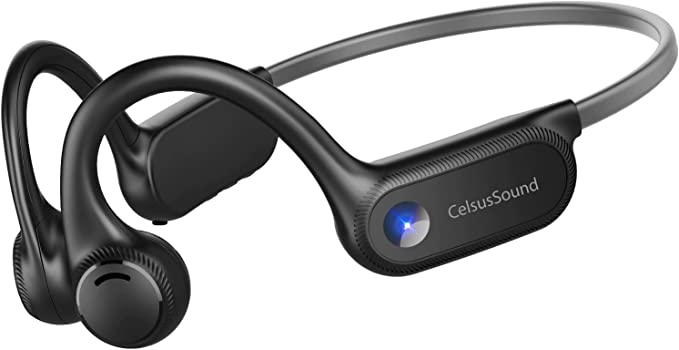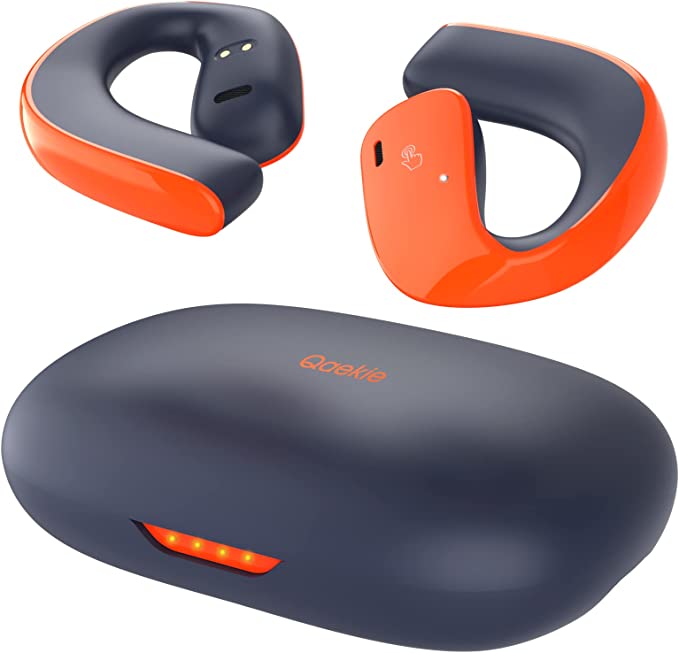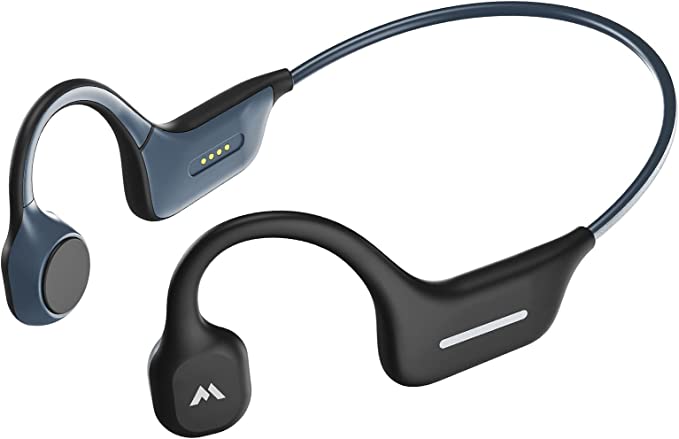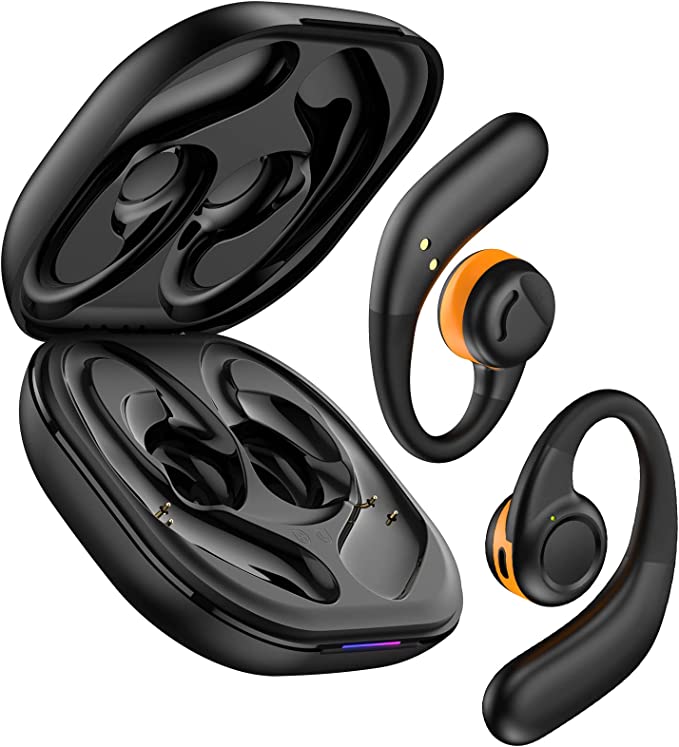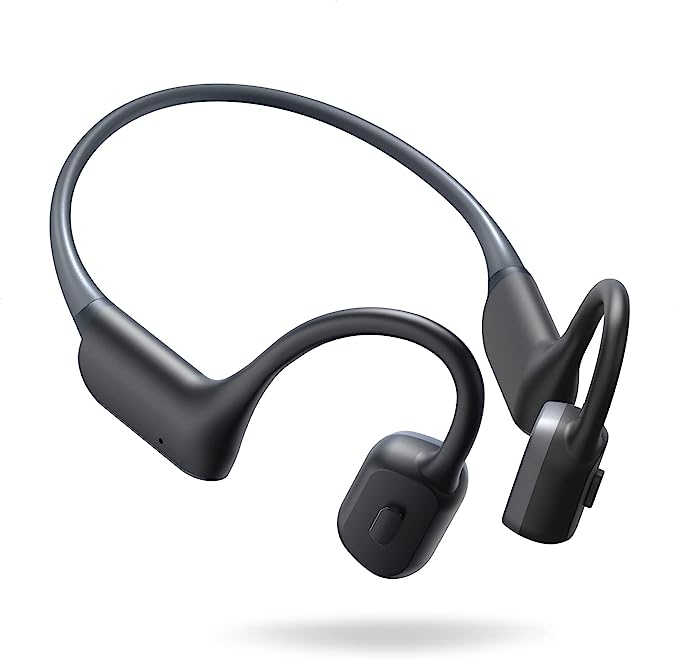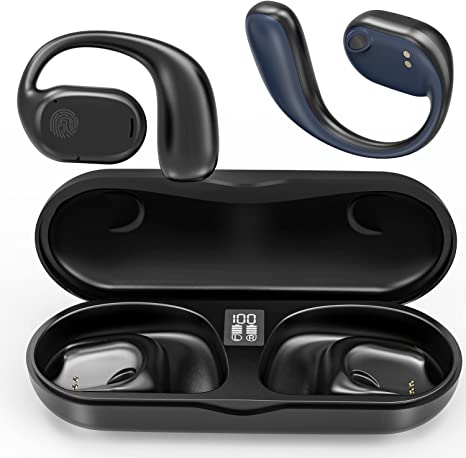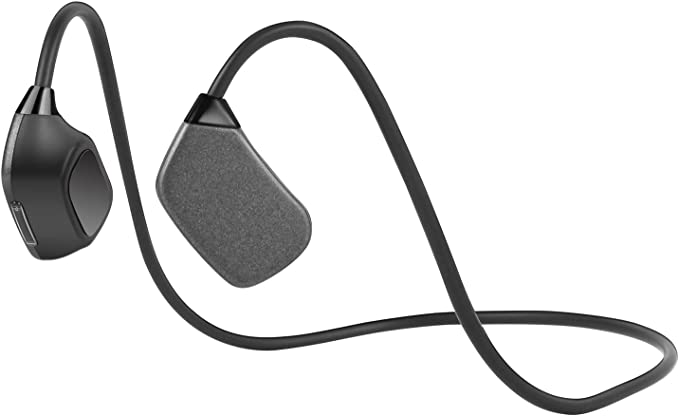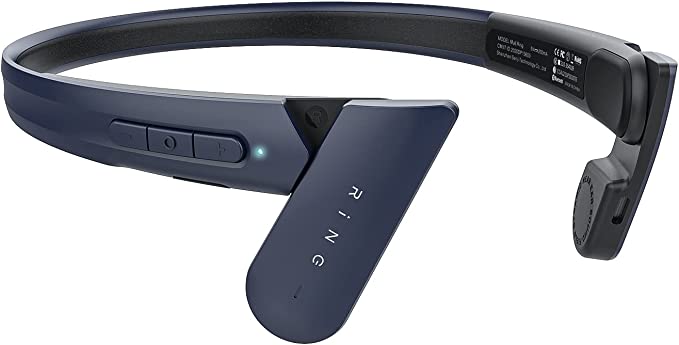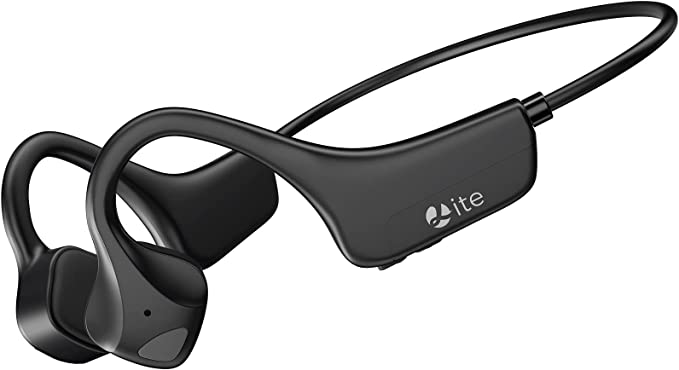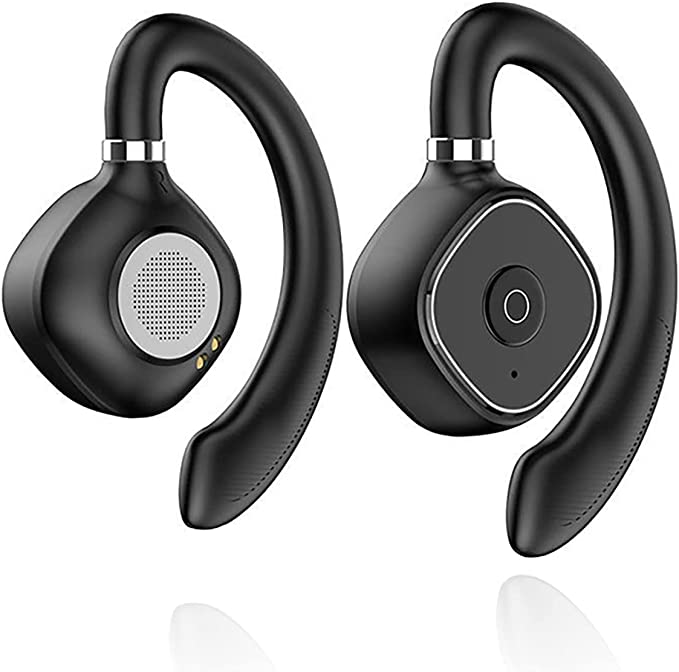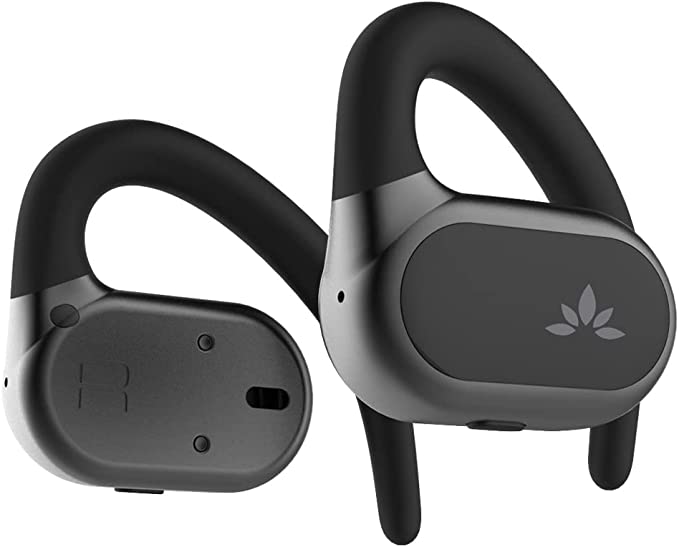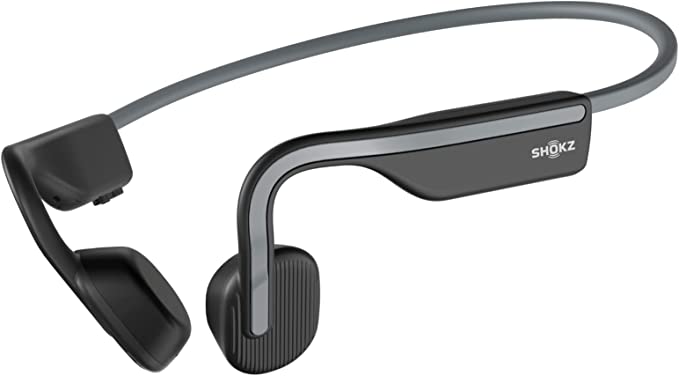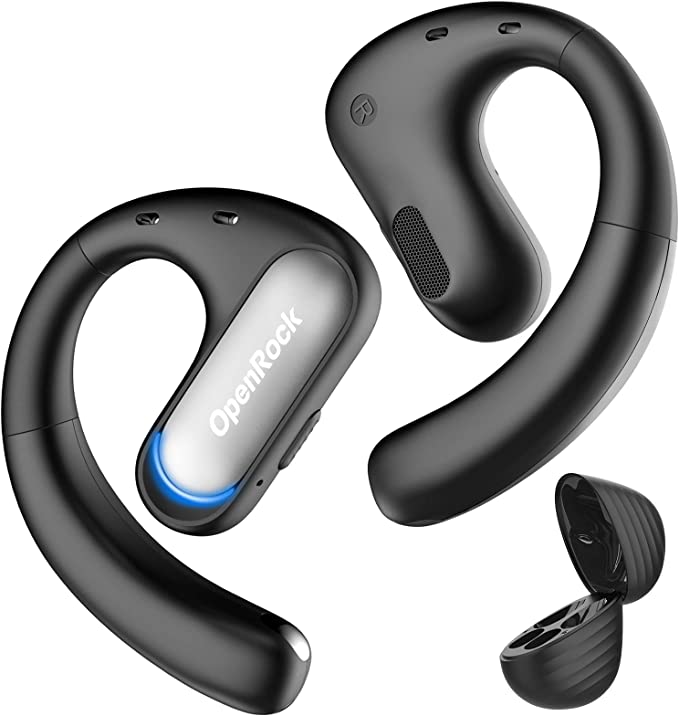Ttbesmi Sports Wireless Ear Clip Headphones: Open-Ear Comfort and Safety
Update on July 24, 2025, 4:23 p.m.
In 1910, in a small kitchen in Utah, a naval radio operator named Nathaniel Baldwin cobbled together a device from a mile of wire, a headband, and two telephone receivers. His invention, crudely assembled on his stovetop, would become the first pair of modern headphones. It was a revolutionary act, not just of engineering, but of social physics. For the first time, sound could be a private experience, a secret world piped directly into one’s consciousness. Baldwin had created the key to a personal auditory cage.
For over a century, the primary directive of headphone design followed this principle of isolation. The goal was to perfect the “auditory bubble”—to create a space so pure and sealed off from the outside world that only the music remained. The Sony Walkman in the 1980s turned this bubble into a mobile fortress of solitude, its foam-padded earpieces a universal symbol for “do not disturb.” The digital age pushed this paradigm to its zenith. From the iconic white earbuds of the iPod to the sophisticated algorithms of active noise-cancellation, technology has been relentlessly dedicated to building higher, thicker walls around our hearing.
This pursuit of sonic purity, however, came with an unintended cost. In sealing ourselves off, we became disconnected—from the warning shout of a pedestrian, the approaching rumble of a city bus, or the simple collegial question from across the office. We gained immersion but sacrificed awareness. Today, we stand at a fascinating inflection point in the history of personal audio. A new design philosophy is emerging, one that asks a radical question: what if the goal isn’t to escape the world, but to seamlessly blend our digital soundscape with it?

A Fork in the Auditory Path
This new philosophy of integration has forked into two main technological paths. The more radical of the two is bone conduction, a concept inspired by Beethoven’s famous trick of biting a rod attached to his piano. These devices bypass the eardrum entirely, sending vibrations through the user’s cheekbones directly to the inner ear. It’s a fascinating, almost futuristic approach.
But a quieter, more pragmatic revolution is also underway: open-ear air conduction. Instead of creating a seal, these devices leave the ear canal completely unobstructed. They operate on a principle of directional sound, using precisely angled speakers to create a focused beam of audio that is guided towards the ear, much like a spotlight illuminates a specific spot on a stage. It’s a delicate compromise, a technology of “just enough.”
This is where devices like the Ttbesmi Sports Wireless Ear Clip Headset enter the narrative. While its name includes the popular term “bone conduction,” its physical design tells a different story—one that perfectly embodies the open-ear air conduction philosophy. It doesn’t press against the bone; it clips gently onto the ear’s cartilage. It’s a case study in how to achieve situational awareness not through brute-force vibration, but through clever, non-invasive design.

The Anatomy of an Open-Ear Idea
To appreciate this design, one must look at it not as a lesser version of a traditional earbud, but as a different tool for a different job. Its core innovation lies in its form factor. By clipping onto the helix of the ear, it leverages the natural structure of the auricle for stability, eliminating the inward pressure that makes many in-ear models uncomfortable over time. This ergonomic choice is quantified by a single, remarkable spec: a weight of just 3.7 grams per earbud. It’s a figure that speaks to a design goal of near-invisibility, of creating a listening experience so lightweight it borders on being unnoticeable.

Inside this featherlight chassis, 13mm drivers work to project sound across a small air gap into the ear canal. In the world of open-ear audio, this balance is crucial. The driver must be powerful enough to deliver clear vocals and mid-range frequencies, yet the open design fundamentally limits its ability to produce deep, resonant bass. Why? The answer lies in basic physics and a psychoacoustic phenomenon known as the Auditory Masking effect.
Without a seal, low-frequency sound waves, which are long and powerful, dissipate easily into the surrounding environment. Furthermore, ambient noise from the outside world—the hum of traffic, the chatter of a café—is free to enter the ear canal. When these external sounds are loud enough, they “mask” or overpower the sound coming from the headphones, especially in the bass and lower-mid frequencies. This is why the Ttbesmi’s user-rated sound quality of 3.2 out of 5 stars isn’t a sign of failure, but an honest reflection of the technological trade-off. It has deliberately sacrificed acoustic isolation to gain unparalleled environmental awareness.

The Invisible Forces of Modern Design
This blend of sound and silence is supported by invisible technologies that have become the bedrock of modern wearables. The presence of Bluetooth 5.3 is more than just a spec; it’s the enabler of true freedom. This latest iteration of the wireless standard provides a more stable connection with lower power consumption, ensuring the delicate audio stream isn’t plagued by dropouts and that the tiny 40mAh batteries in each earbud can last.
The marketing claim of “36 hours ultra long playtime” also reveals a key aspect of modern TWS design philosophy. This figure is not the endurance of the earbuds themselves but the total potential power held by the system, including the 400mAh charging case. The case is no longer just a container; it’s an external battery, a lifeline that makes all-day use practical. The earbuds function in short, efficient bursts, returning to their cradle to recharge, a symbiotic relationship that defines the entire product category.

Ultimately, devices like the Ttbesmi represent a fundamental shift in our relationship with personal technology. They signal a move away from products that demand our full attention and toward those that integrate quietly into the periphery of our lives. The ergonomic imperative for comfort and the engineering challenge of balancing performance with awareness are the driving forces of this new chapter.
The century-long quest to perfect the auditory bubble has given us incredible sonic immersion. But the next century of personal audio may be defined by its inverse: the art of gently breaking that bubble. The future is likely contextual, where our devices can intelligently modulate their level of openness, perhaps sealing us off on a noisy subway and then fading into transparency as we step onto a quiet street.
Today, the choice of headphones is becoming less about technical specifications and more about a personal philosophy. Do you want to shut the world out, or invite it in? There is no right answer, but for the first time in a century, we truly have a choice. And in that choice, we find the real evolution of listening.


